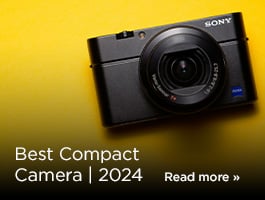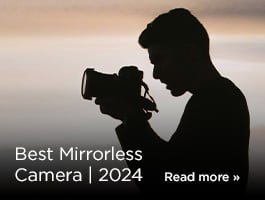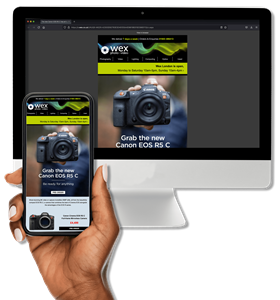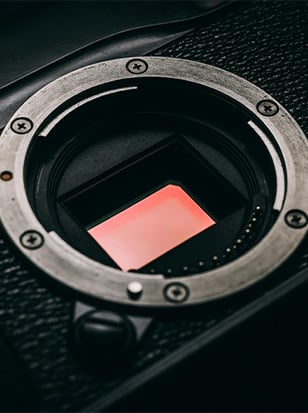
8K video is definitely one of the biggest buzzwords in the camera world right now. Pro-spec cameras like the Canon EOS R5 Mark II, the Nikon Z9 and the Sony A1 II are all expected to have it. If you’re a videographer, you may have wondered whether it’s time to bite the bullet and upgrade to an 8K-capable camera.
Something that’s worth establishing right away, in case you’re worried, is this: if you shoot video, even professionally, you probably don’t need 8K at the moment. Clients aren’t asking for it, most displays don’t even support it. 4K has become the industry standard, and as such, beginner vlogging cameras like the Nikon Z30 or the Sony ZV-E10 II offer 4K video. So don’t be nervous that you’ll only be taken seriously as a filmmaker or vlogger if you have a £4,000 8K camera — that isn’t the case.
This begs the question — who is 8K for?
The uses of 8K
Does anyone need 8K? Short answer: yes. Sam Wain, one of Wex’s pro video specialists, points out there are multiple types of user who do stand to benefit from having 8K video in their repertoire. “Any shooters looking to shoot full-scale feature films or any projects that require extensive VFX work as the higher resolution makes it easier to Rotoscope and Chromakey,” he says. It’s true. Back in 2017, we saw the first use of 8K in film production with Marvel’s Guardians of the Galaxy Vol. 2 which was shot on RED’s Weapon 8K VV camera.
And it’s not just filmmakers — those shooting for advertising and marketing can also benefit from 8K, as these kinds of content are often delivered to exceptionally large displays. “Think Piccadilly,” Sam says. “Even though the screen won’t support 8K, as 8K displays are fairly new, the down-sampled video will look better than a 1080p or 4K video.”
Fair enough. So, what about video shooters who aren’t working on feature films or high-level advertising campaigns — is 8K useless to them at the moment?
Not exactly. As Sam observes, there are plenty of ways that a shooter working to deliver content at lower resolutions can still take creative advantage of their 8K-capable camera. “One major advantage is being able to shoot double-shots in one take,” he says.
“Example. The classic double-character shot in a car through the windscreen. Normally you’d shoot three shots — two close-ups, one for each person in the car, and a wide to show both people.

“Shooting in 8K, you can just shoot it wide and then crop in to get the close-ups. The resolution will drop but due to the higher than normal resolution to start with, you’ll still be coming out with 4K closeups.”
In the world of video and filmmaking, where time is always at a premium, the idea of getting three shots for the price of one definitely has some appeal. And this kind of versatility is trickling down to the non-pro cameras. Take the recent Fujifilm X-M5, an impressive little camera that shoots 6.2K open-gate video, meaning it uses the full width of its sensor. This gives impressive cropping latitude, offering a hugely impressive degree of shooting versatility for a camera at its price.
All this has happened before
8K video is not going to become the industry standard tomorrow. There are still relatively few televisions and displays that support it, and 4K resolution is more than enough for most practical applications. But this won’t be the case forever.
“As with all tech, the limits are always pushing forward,” Sam says. “As supply and production chains get optimised the cost will come down. A good comparison is how ten years ago, 4K was the new big thing, but displays and cameras were very expensive, whereas now, 4K is pretty much the standard for capture and displays are catching up.”
Indeed, it is somewhat instructive to do a little Google-fu and look for articles about 4K from the early 2010s, when it was starting to become adopted on high-end consumer cameras, and many users were debating whether they really needed it. A VMI blog from 2014 titled “The case for and against 4K” makes for fun reading now that 4K has become the industry standard — and bears striking resemblance to a lot of what we’ve discussed here.
So, what are our key takeaways from looking more closely at 8K? I reckon they can be summarised pretty succinctly:
Do I need 8K right now? Probably not.
But could 8K be useful for my shooting? Absolutely.
And will I need 8K in the future? It’s likely.
But will my 4K camera suffice for now? Definitely.
About the Author
Jon Stapley is a London-based freelance writer and journalist who covers photography, art and technology. When not writing about cameras, Jon is a keen photographer who captures the world using his Olympus XA2. His creativity extends to works of fiction and other creative writing, all of which can be found on his website www.jonstapley.com







